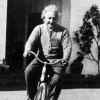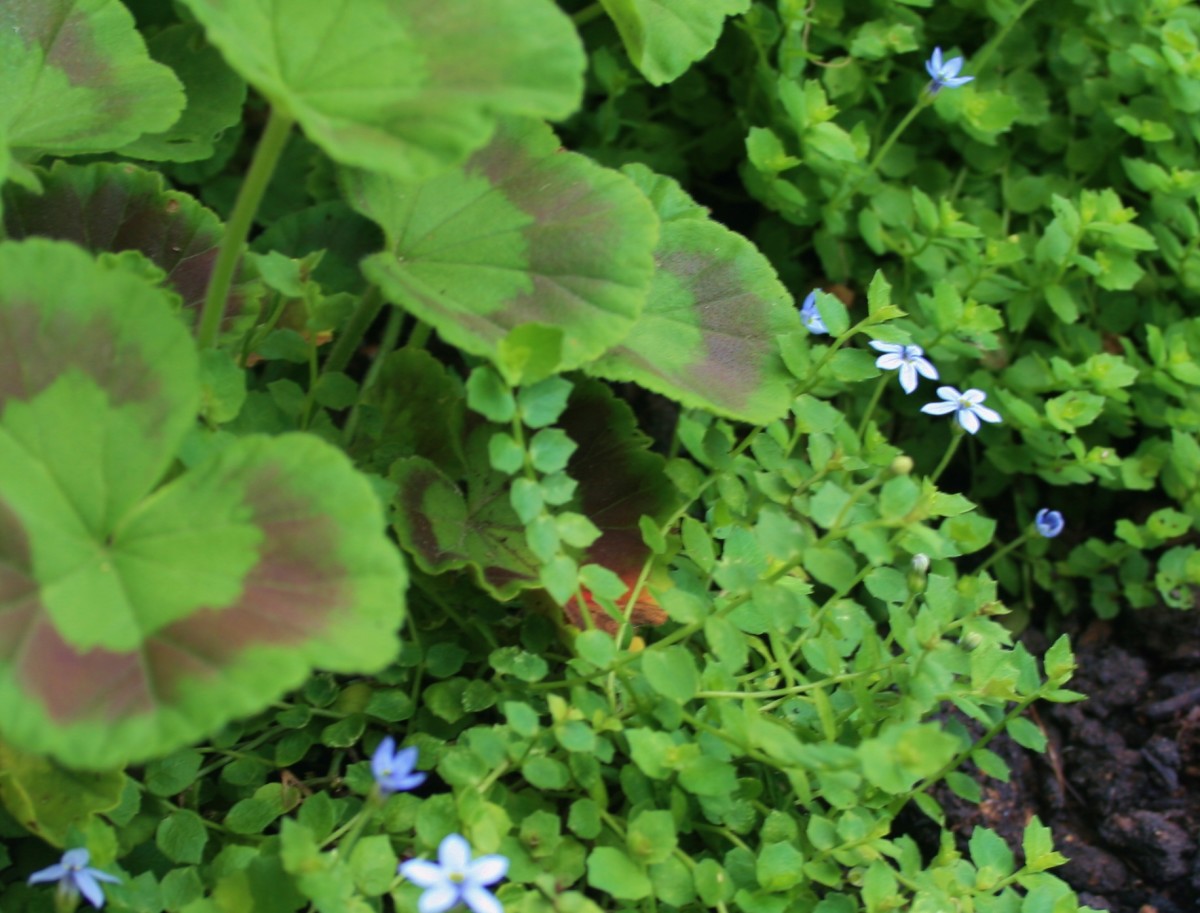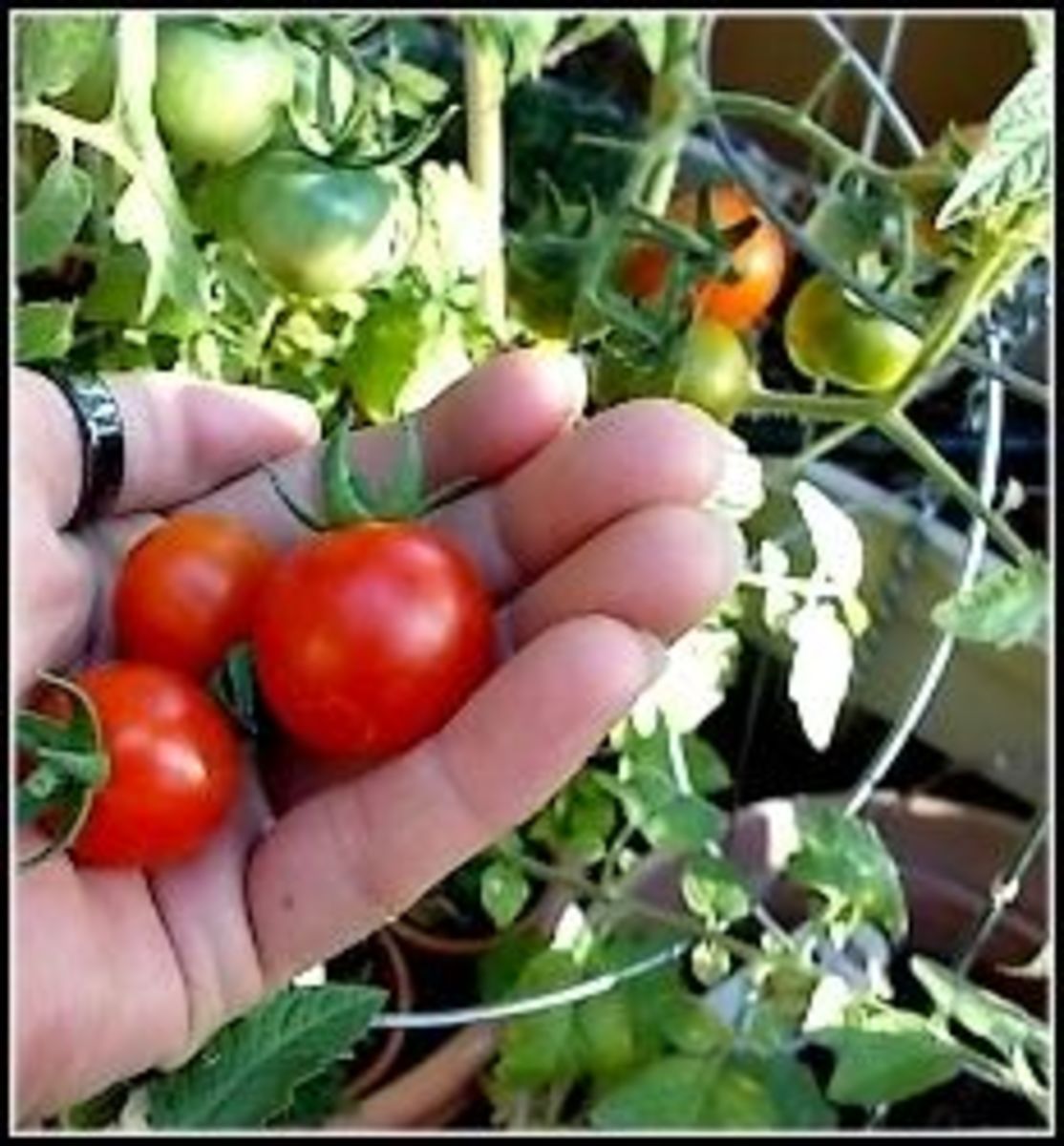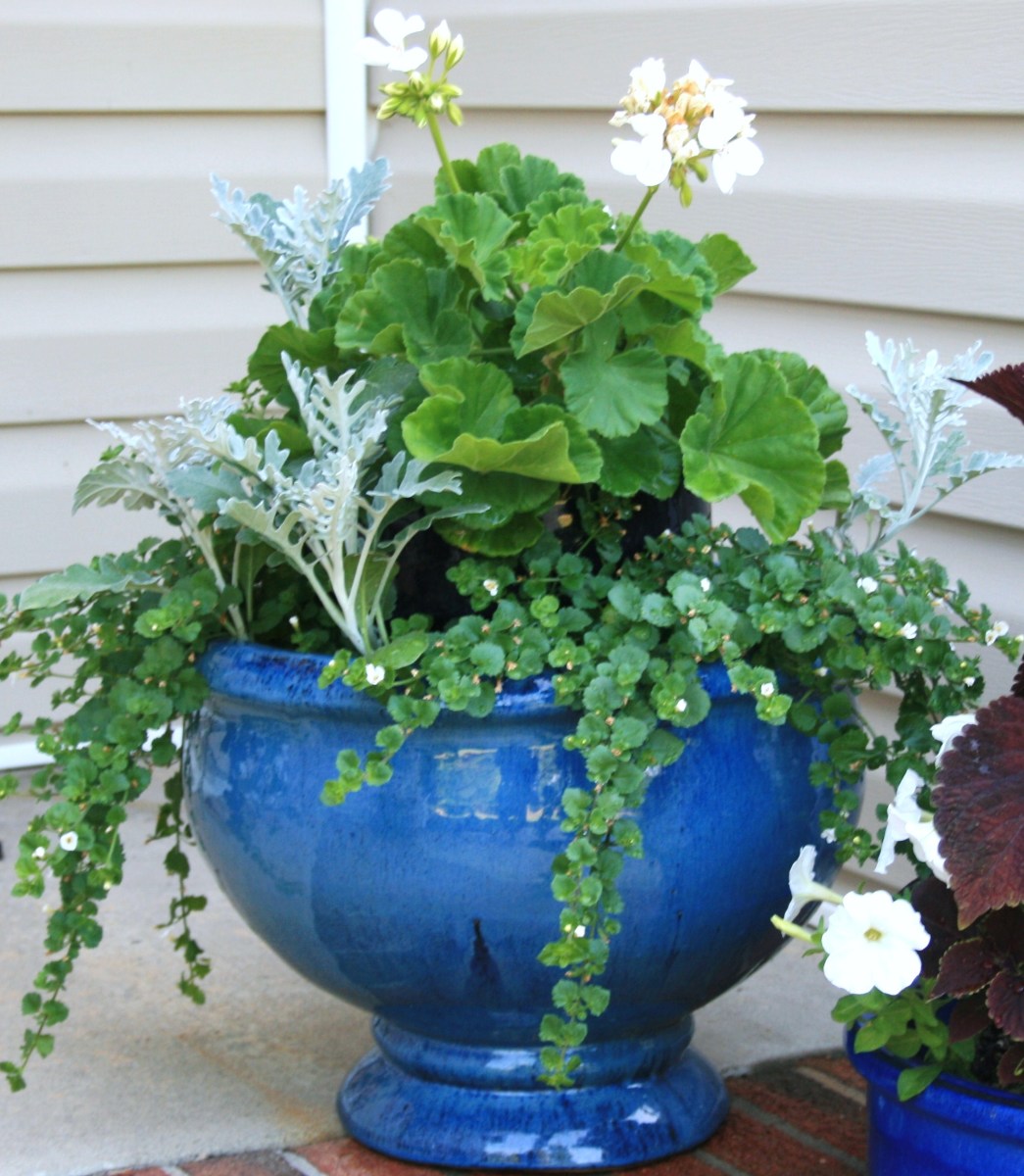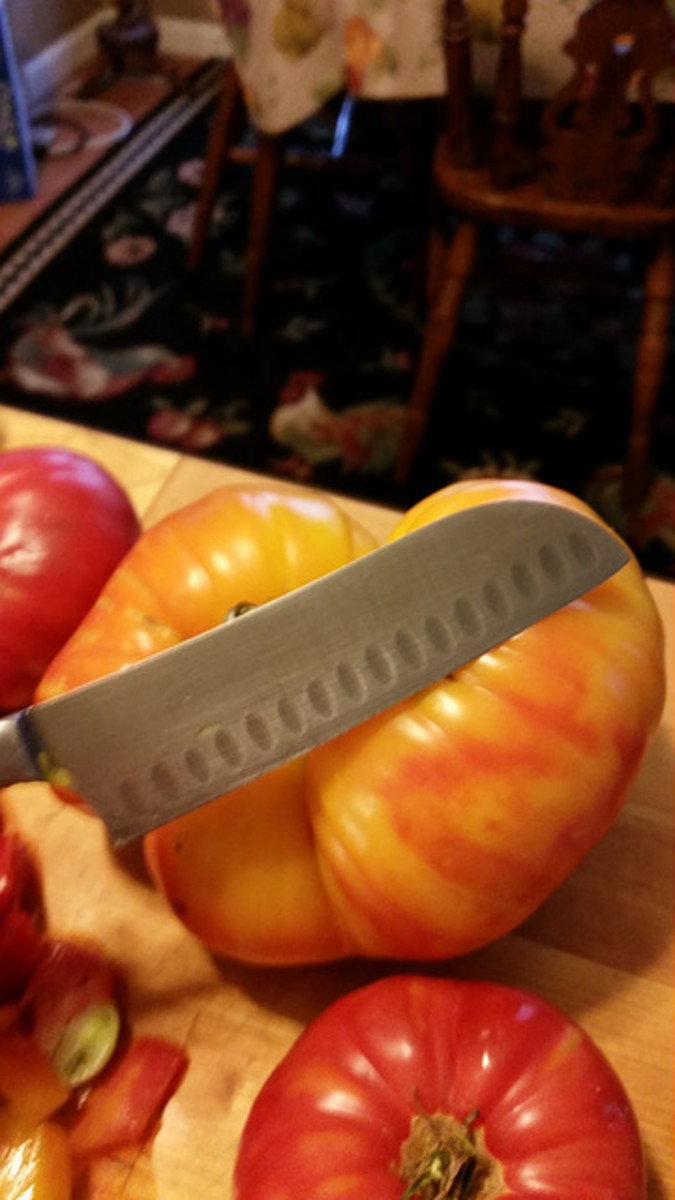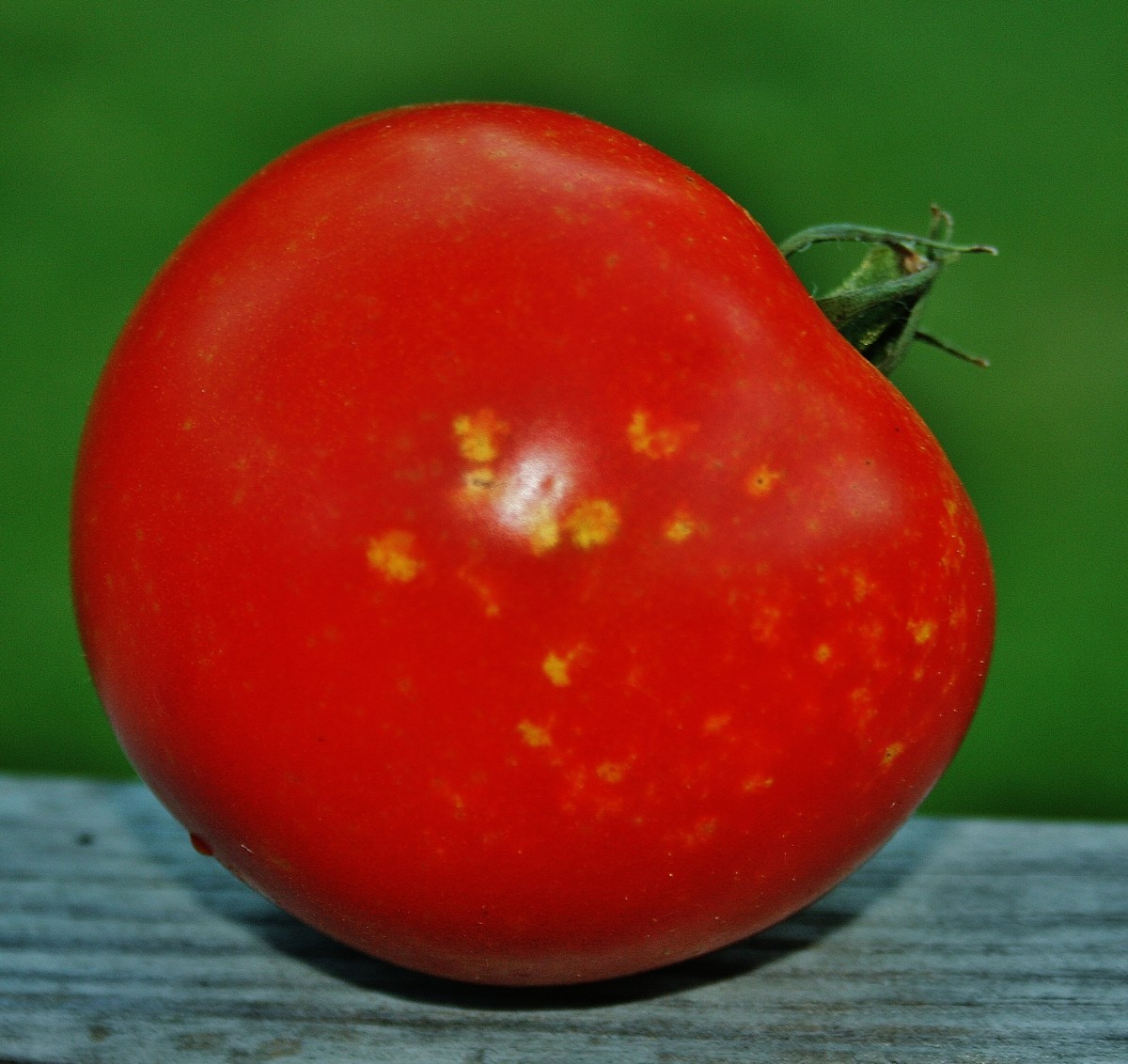- HubPages»
- Home and Garden»
- Gardening»
- Planting Vegetables
Does Growing Upside Down Tomatoes Work?
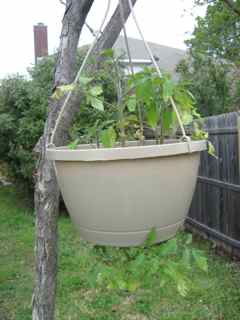
Why Grow Tomatoes Upside Down
Why has it become so popular to try growing tomatoes upside down? You see articles on building your own planters, and there are a variety of commercial planters. Let's examine some of the advantages of upside down tomatoes.
No Staking - Since the tomatoes are hanging from the planter, you have no need to stake them, or bother with any other types of support other than the planter hanger. For some indeterminate types of tomatoes, you may find you need to trim them to keep them off the ground, but no need for tomato stakes.
Soil Borne Pests - Since the tomato plants don't rest on the ground, you don't have nearly the problems with slugs and other soil borne pests.
Soil Borne Disease - Since you are likely to replenish the soil annually with a planter, problems with diseases lurking in the potting soil are significantly lower.
Improved Air Circulation - Since the tomato plants are suspended in the air, you get increased and better air circulation. This results in improved pollination, higher yields, and fewer problems with rot bottom, a common tomato disease caused by too much watering.
Weeds - Since the planter has very little exposed soil, there are almost no problems with weeds which also means you don't have to weed.
Location - The beauty of container gardening is that you can create a garden almost anywhere. You can hang these planters on your apartment or condo balcony, you can hang it on your patio, or you can hang it near your back door. All of these options keep your fresh tomatoes much closer to the kitchen than a backyard garden plot.
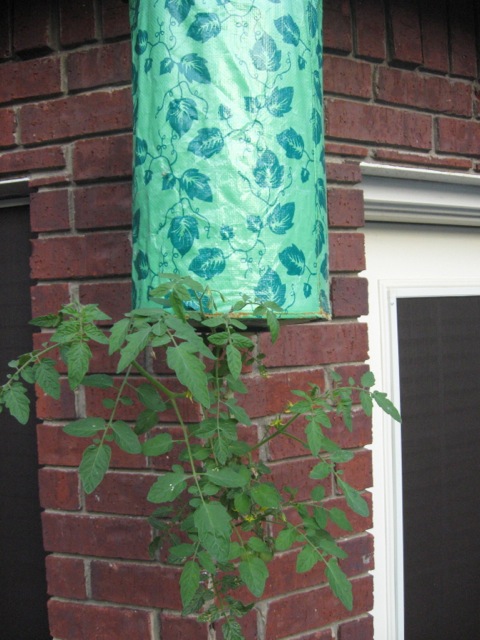
Topsy Turvy on Amazon
Topsy Turvy Tomato Planters
The most famous upside down tomato planter is the Topsy Turvy Planter. A few years ago it was even featured in Time Magazine as one of that year's Amazing Inventions. It's a simple construction, but it has the water retention sponge in the middle of the unit that is key to making it much easier to use than most home made planters. With that in place you don't have to worry about watering as often, which can be an issue in any type of container.
While this has been a very popular planter, it has the shortcoming of only supporting one plant at a time (or two if you try planting another plant in the top).
To get around this, the same company has introduced the Topsy Turvy Tomato Tree. This is a unit that has a built in stand, and has spots for three tomato plants. While they are not technically upside down, they are hanging plants with most of the same advantages. So you get room for three, and a built in stand so you don't have to find a place to hang it.
For those DIYers out there, you can actually make one of these hanging tomato planters with a bucket or even a milk jug. But the money you will save will not land you the water retention sponge that addresses the main problem with container gardens, and that is the problem of keeping them adequately watered. So before going home made, make sure you are able to water DIY planter adequately and regularly.
Upside Down Tomato Garden
The Upside Down Tomato Garden is the high end of tomato planters. This unit has a soil container that is supported by 4 poles, and has room for four tomatoes to be planted upside down. But, in addition to that, there is room for additional plants on the top of the container. You can fill this with flowers, or maybe smaller pepper plants, so it can be almost a whole garden on a stand on your patio. Note, this unit can be quite heavy when you fill it with soil and water it, so be careful about its placement because you don't want to be trying to move around a fully loaded unit.
Finally, if you just want a small tomato plant, you can plant one of the smaller varieties like Patio in a simple hanging planter that takes up very little room.
While all these planters are generally sold as a way to grow tomatoes, you can actually use them to grow other plants like peppers or cucumbers as well.
So, hanging tomatoes work quite well. Build one of your own, or just save the time and pick up one of the smaller ones to get started with some of the best tomatoes you've grown.
